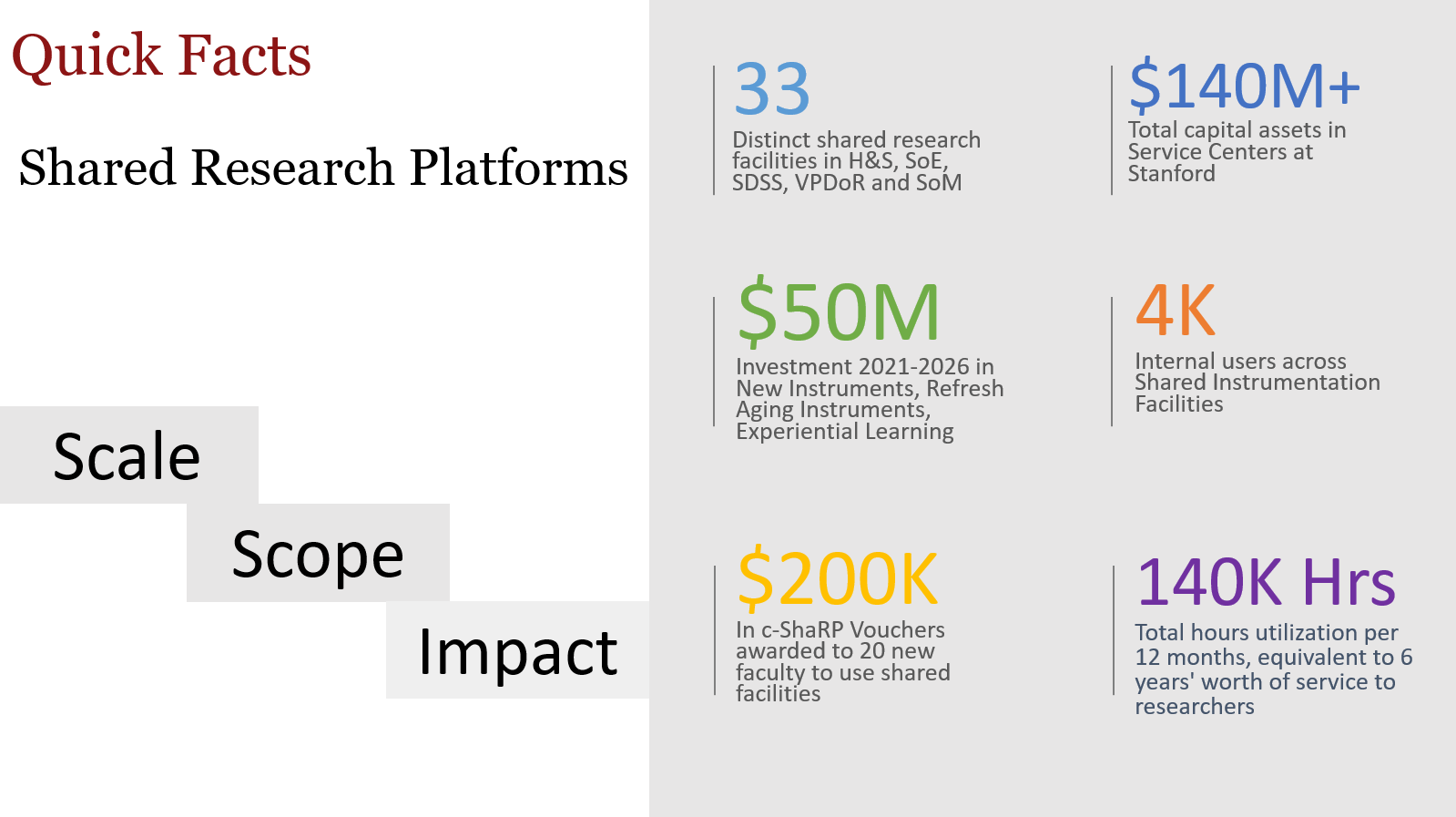The Vice Provost and Dean of Research (VPDoR) Shared Research Platforms team aims to strengthen capability and accessibility of Stanford shared research facilities and platforms spanning science, engineering, medicine and sustainability. We support PIs and research teams across all Stanford schools and VPDoR units by reducing access barriers and inequities in critical research resources. We enable smooth paths to locating, navigating, and exploiting available resources. The Shared Research Platforms (ShaRP) team administers grant programs that support equipment upgrades, acquisition of new capabilities, and enable experiential learning for users of shared facilities. We also support new faculty at Stanford jump-start their research by providing seed grants/vouchers to access shared facilities.

c-ShaRP
The initiative of the Community of Shared Research Platforms (c-ShaRP) is re-imagining shared facilities at Stanford. Today’s and tomorrow’s biggest challenges -- ranging from plastics recycling to personalized health, quantum computing, sustainability, and space exploration -- require outstanding, well-run facilities. Stanford was an early leader in developing models for shared facilities, but the scale, interdisciplinarity, and team-based nature of research today demand yet greater coordination and planning. To enable the next big breakthrough, c-ShARP coordinates ideas and investments to advance and democratize access to modern, state-of-the-art instrumentation and scientific/technical staff, allowing users to craft the most bold, innovative, rigorous experiments that advance human knowledge. We imagine a new paradigm for fundamental and translational research platforms with cutting-edge, inter-connected, coordinated infrastructure for world-changing research.
C-ShaRP manages three internal funding programs:
-
c-ShaRP Instrumentation & Enhancement Program: for acquisitions, programs, or other enhancements to Shared Facilities that benefit the user community at large.
-
Experiential Learning Proposals: for educational efforts that leverage Stanford’s Shared Research Facilities to enrich scientific learning journeys with hands-on experiences.
-
Shared Facilities Voucher Proposals: for new Faculty at Stanford to explore, access and use services offered in the extensive network of shared facilities.


